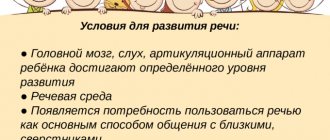Algorithm for producing whistling sounds
Maria Karmanova
Algorithm for producing whistling sounds
Algorithm of work at the stage of producing whistling sounds
NAZ DPZ PNP AG SPZ IPP
Sound (C)
The sound is hard , dull, consonant; slotted, lingual-dental, at the site of resonance - oral.
Features of articulation: lips stretched in a smile; teeth are brought together at a distance of 1 mm; the tip of the tongue rests on the lower incisors; the back of the tongue is curved, and a groove is formed in the middle of it, along which the exhaled stream is directed to the incisors; the lateral edges of the tongue are adjacent to the inner side of the upper molars; the velum palatine is raised and pressed against the back wall of the pharynx, as it forms an obstacle to exhaling air through the nose; vocal cords are open; the air stream is narrow, cold, strong. Lack of sound : Anomalies in the structure: progeny, prognathia, absence of front teeth, sparse teeth; Phonemic hearing impairment. Lip exercises: “Fence”
,
“Smile”
,
“Grin”
.
Tongue exercises: “Spatula”
,
“Let's punish the naughty tongue”
,
“Brush your teeth”
,
“Swing”
,
“Delicious jam”
,
“Tube”
.
Exercises to develop an air jet: “Whose ball will fly farther?”
,
“Sultans”
. By imitation: in front of the mirror we show the child the correct articulation
of the sound “C”
.
We ask the child to open his mouth, smile, spread his tongue, rest the tense tip against the lower incisors and pass a “breeze” (a strong air stream)
-
the sound “C”
.
From the original "I"
: we ask the child to pronounce
the sound “I”
, bring his teeth together,
“turn off”
his voice and pass a strong air stream across his tongue.
"How the water flows"
,
“Pump”
,
“Water is boiling in the kettle”
.
Interdental sigmatism:
The tip of the tongue is located between the upper and lower incisors. The air stream is weak and scattered. Direct open bite, flaccid tongue tip, adenoid growths, macroglossia, absence of incisors. Lip exercises: “Fence”
,
"Grin"
.
Exercises for the tongue: “Brushing your teeth”
,
“Swing”
,
“Delicious jam”
,
“Slide”
,
“Gutter”
,
“Tube”
.
Exercises to develop an air stream: “Blow away the cotton wool”
,
“Put the ball into the goal
.
From the original "I"
.
“A big and a small plane is flying”
,
“The ball burst”
,
“Cold breeze”
.
Lateral sigmatism:
The tip of the tongue rests on the alveoli, and the entire tongue lies on its edge; one of its edges rises to the inside of the molars, passing exhaled air along the lateral edges of the tongue, resulting in a “squelching”
sound .
Can be one-sided or two-sided. Lateral open bite, the presence of an erased form of dysarthria, paresis of the tongue muscles, macroglossia. Exercises to strengthen the lateral edges of the tongue: “Grove”
,
"Tube"
.
Exercises to develop an air stream: “Blow away the cotton wool”
,
“Sultans”
,
“Blow the Trumpet”
.
Tongue exercises: “Swing”
,
“Delicious jam”
,
“Spatula”
,
“Painter”
,
“Slide”
- for correct articulation.
A step-by-step method of sound production (According to Rau)
. 4 stages:
Stage 1: development of a wide spread tongue;
Stage 2: clamping the tongue between the teeth and releasing a stream of air;
Stage 3: strengthening interdental pronunciation:
the tip and lateral edges of the tongue are fixed between the teeth - this helps to develop the correct symmetrical posture of the tongue;
Stage 4: formation of dental pronunciation (mechanism: the tongue is placed behind the teeth)
.
“The balloon is deflating”
,
“Cold breeze”
,
“The tire got punctured”
.
Nasal sigmatism:
The root of the tongue rises and adjoins the soft palate, which does not close with the back wall of the pharynx, the front part of the tongue is not involved, and the air stream goes into the nasal cavity. A sound is heard , but with a nasal tinge.
Short small tongue; absence or bifurcation of a small tongue; increased muscle tone of the tongue; tension at the back of the tongue.
Breathing differentiation: (nasal - oral: inhale through the nose - exhale through the mouth and vice versa, only through the mouth - only through the nose).
Tongue exercise:
"Ball"
,
“Football”
(to move the tongue forward,
“Spatula”
,
“Needle”
,
“Snake”
Exercise for forming a directed air stream: “Storm in a glass”
,
“Blowing out a candle”
,
“Who will drive the ball further”
.
A step-by-step method of sound production (According to Rau)
.4 stages:
Stage 1: development of a wide spread tongue;
Stage 2: clamping the tongue between the teeth and releasing a stream of air;
Stage 3: strengthening interdental pronunciation:
the tip and lateral edges of the tongue are fixed between the teeth - this helps to develop the correct symmetrical posture of the tongue;
Stage 4: formation of dental pronunciation (mechanism: the tongue is placed behind the teeth)
.
“Drying clothes”
,
“A strong wind blew”
.
Labiodental parasigmatism:
Pronounced like "F" sounds
and
“B”
(
“fushka”, “kofynka”
,
“vabor”
).
The lower lip is raised towards the upper incisors, forming a narrowing through which the exhaled stream of air passes, and the tongue is in the position of the sound “C”
.
As a result, the pronunciation becomes unclear, incomprehensible and unpleasant to the ear. The articulatory structure is insufficiently formed. Organic factors (prognathia - malocclusion; large lips and teeth)
.
Phonemic hearing impairment.
Exercise for the development of phonemic awareness: “Catch
the sound " (s-f)
.
Differentiation by articulation of sounds [s] and [f] (correct articulation of sounds )
.
Lowering and raising the lower lip.
Lip exercises: alternation
"Grin"
and
“Mouthpiece” (works on the ability to hold your lips in a wide smile)
.
Tongue exercises:
"Groove"
(strengthening the lateral edges of the tongue,
“Spatula”
,
“Slide”
,
“Let’s punish the naughty tongue”
,
“Delicious jam”
,
“Swing”
.
Exercise for forming a directed air stream: “Whose ball will fly farther?”
, an exercise with
“pultants”
, with snowflakes, with butterflies, with leaves, etc., suspended on a thread. Decomposition of articulation.
From the original "I"
.
“Whose song?” (the wind sings s-s-s, the hedgehog sings f-f-f)
.
Dental parasigmatism:
The tip of the tongue rests on the edges of the upper incisors, the lateral edges adjoin the upper molars. The air stream is jerky. Instead of "C" sounds
,
“Z”
the sounds “T”
and
“D”
are heard , for example: soup -
“tup”
, beans -
“fatol”
, airplane -
“tamolet”
.
Closed bite.
The articulatory structure is insufficiently formed.
Phonemic hearing impairment.
Exercise to develop phonemic awareness: “Catch
the sound ” (s-t)
.
Differentiation by articulation of sounds [s] and [t] (correct articulation of sounds )
.
Lip exercises:
"Grin"
(the ability to keep your lips in a wide smile is practiced,
“Fence”
,
“Smile”
-
“Tube”
.
Tongue exercise:
"Spatula"
(the ability to keep the tongue wide, spread out,
“Punish the naughty tongue”
,
Brush your teeth
,
“Swing”
,
“Delicious jam”
,
“Groov”
(strengthening the lateral edges of the tongue,
“Slide”)
.
Exercise for forming a directed air stream: “Whose ball will fly farther?”
, an exercise with
“pultants”
, with snowflakes, with butterflies, with leaves, etc., suspended on a thread.
From the original "I"
.
"Jolly Stream"
.
Hissing parasigmatism of sibilants :
The lips are rounded and slightly pushed forward. The tip of the tongue is raised to the alveoli, the back is sharply curved towards the hard palate, the lateral edges of the tongue are adjacent to the molars, as a result of which a softened “Sh” a whistle
or
“F”
: dog –
“shabaka”
, castle –
“zhamok”
. Phonemic hearing impairment.
The articulatory structure is not sufficiently formed. Exercise for the development of phonemic hearing: “Catch
the sound ” (s-sh)
.
Differentiation by articulation of sounds [s] and [sh] (correct articulation of sounds )
Lip exercise: “Fence”
, alternating
“Smile”
-
“Tube”
.
Tongue exercise:
"Spatula"
,
“Let's punish the naughty tongue”
,
“Swing”
,
“Delicious jam”
,
“Let's brush our teeth”
,
“Slide”
.
Exercise for forming a directed air stream: “Kick the ball into the goal”
,
“Sultans”
,
“Whose ball will fly farther”
.
From the original "I"
.
“The Riddle of the Breeze”
,
“The Tale of the Breeze”
.
Examination and diagnosis
First, the speech therapist listens to how the child speaks, then looks at the functioning of the speech organs, checks the mobility of the tongue, the tone of the lips and cheeks. After this, he conducts a brief survey of parents about the child’s speech development and concomitant diseases. Finds out whether he is registered somewhere, what specialists he visited and what examinations were carried out. All this is needed not for empty curiosity, but to clarify the overall picture and the causes of the defect.
The examination reveals:
- the sound is distorted or absent altogether
- there is mixing with other sounds
- Is the syllable structure and phonemic hearing impaired?
- Are there problems with the innervation of the speech muscles?
- are there any adenoids?
- bite condition
All this affects the ways and techniques of producing the sound C; the speech therapist always proceeds from what already exists at the moment.
Examples of whistling languages
As of 2022, there were approximately 70 whistling languages recorded in the world. The most famous and studied habitat of the whistling community is La Gomera, one of the non-tourist Canary Islands. Silbo Gomero was the first whistling language to receive UNESCO living heritage status; it also has the largest number of speakers - about 20 thousand.
The Silbo Gomero language now plays an important role in daily life on the island. It is taught in schools, and is used to attract the attention of tourists - in some restaurants, waiters convey order details by whistling.
Teenagers sometimes earn extra money and put on a whole show for visitors, managing to adapt the whistle for other languages. However, since the start of the coronavirus pandemic, such practices had to be abandoned - putting fingers in the mouth has become unsafe. Now schoolchildren do not practice whistling themselves, but listen to recordings.
The older generation notes that it is more difficult for them to understand young people who learn to whistle at school rather than in the pastures. For them, such a whistle is too elegant and precise, and the vocabulary is richer and more diverse. Elderly residents of La Gomera recall using silbo to alert locals that the police were coming. In the recent Romanian thriller The Whistlers by Corneliu Porumboiu, Silbo is used by gangsters as a secret code language.
On the Greek island of Euboea, in the village of Antia, Sfirian is spoken, the sound of which is reminiscent of bird sounds. Sfiria is one of the most endangered and rare languages in the world. Most native speakers are farmers and shepherds.
Now the population of the village is 37 people, but most of them have lost their teeth, so they cannot whistle. In 2022, only 6 people spoke Sfiri fluently. Local residents are trying their best to preserve their language - they organize classes, write to the local administration with a request to open a school and invite scientists to record the sound of the language. Scientists learned about the Sfirian language only in 1969, when a plane crashed in the mountains near Antia. Members of the search party heard the shepherds talking in a whistling language. The range of communication in Sfiri can reach 4 kilometers.
In Mexico, Sochiapan Chinantec and Mazatec are used for whistling. The theoretical range of whistling can reach two kilometers, but residents prefer to communicate over short distances and for them it is more a way of socialization rather than a forced tool.
Residents of Mexican communities use whistling to speak in the market, a situation unique to whistling languages. Another surprising fact is that in Mexico only men communicate by whistling, although women usually understand what is being said.
In northern Turkey, in the village of Kuskoy, they speak the “language of birds.” It has been used in this area for many centuries and has approximately 10,000 speakers. In 2022, it, along with Silbo Gomero, was included in the UNESCO list of oral and intangible cultural heritage in need of protection. Every year the village holds a festival dedicated to the traditions, history and culture of bird language. Recently, it began to be studied in primary schools and the Turkish University of Giresun at the Faculty of Tourism.
The Hmong people, who live in the foothills of the Himalayas in Vietnam, have their own version of a whistling language that is used by hunters and farmers. However, it has another popular use - courtship language. Although rarely practiced today, young people used the Hmong whistling language as a flirting language. The boys wandered around the villages whistling poems to attract the attention of girls. If the girls reciprocated, this could be the beginning of a relationship.
***
Rapid developments in technology have significantly reduced the need for whistling, but network coverage still suffers in high mountain areas. Elderly residents of whistling communities try to pass on their knowledge to young people, participate in festivals dedicated to language traditions and often ignore mobile phones, preferring to communicate using a proven method. Teenagers resort to whistling much less frequently, but still periodically practice and become interested in the ancient skill. For them, this is a way to get closer to history and understand the origins of local traditions. From time to time, another important feature of whistling comes in handy - it can quickly convey information that is not intended for other people's ears. One way or another, whistling tongues remain a unique phenomenon, many of whose mysteries have yet to be revealed.
Learning to pronounce the sound [z] correctly
The production of sound [z] differs from sound [s] only in that the voice is included. To arouse the child’s interest, you can show and then ask the child to reproduce how a mosquito rings: z-z-z-z-z-z. To best consolidate the sensation, you can place the child’s hand first on the adult’s neck, and then on your own, and alternately pronounce the sounds [s] [z], then the child will feel the power of the voice - with [z] “the motor starts working in the throat.” The production of [z] most often occurs by imitation of an adult.
When an isolated sound [z] appears, we begin work on its automation according to the same scheme as the sound [s]: in syllables, words, phrases, etc. There are cases when a child deafens [z] and speaks [s] instead. Here you need to work on the child’s phonemic hearing; perhaps he hears these sounds poorly and does not distinguish. In case of difficulties, we also return to tactile sensations: hand on the neck.
Massage
The biggest difficulty in placement is in cases of interdental and lateral sigmatism. Here the main emphasis is on massage, because the cause of the pathological reflex most often lies in malocclusion and impaired innervation, or separately, but more often comes in one bottle. The main emphasis is on massage; dysarthria without it is never fully corrected. In this case, the whistling sounds are placed last, after all others have been corrected.
Well, you definitely need a consultation with an orthodontist, since malocclusion has a bad effect not only on pronunciation, but on overall health, leading to diseases of the ENT organs, osteochondrosis of the cervical vertebrae, since the facial skeleton, and therefore the entire musculoskeletal system, is not formed correctly in general. For bite problems, massage also helps a lot. The tongue, like an organ without bones, is very elastic and can take any shape.
This is where I finish writing this article, but the topic of correcting whistling sounds will be continued, follow the news, subscribe to blog updates to stay up to date. Write your comments and suggestions in the comments, share your experience. Share links to articles with your friends and acquaintances on forums and social networks to discuss with them the problems of children’s speech development. All the best, success!
You can also read: setting the sound w setting the sound p
Mechanical assistance
If the tongue is not held behind the teeth, but jumps out, then mechanical support is needed. You can hold the child’s tongue in the slide pose using:
- finger (pre-washed)
- massage or special staging probe
- toothpicks (break off the sharp edge)
- matches (not sulfur head)
- cotton swab
while practicing gymnastics at the same time:
- tube with tongue
- pancake
- brushing the lower teeth
- comb your tongue
- roll the reel
- fence - tube with lips
breathing exercises:
- blow the cotton wool off your tongue between your lips
- between teeth
- downhill
- match from the hill
voice
- pull out the sounds I, A, E in the slide position
tongue and lip massage
Then all these skills worked out separately are combined, holding the child’s tongue and blowing away the cotton wool. He holds the slide, pulls out “iiiiii”, then adds “ssssss” - sometimes whistling ones are better placed in reverse syllables - AS, IS, ES, YS, you can use US and OS, but at the same time you need to clearly make a “pipe-fence” with your lips. If first “ssss” and then “iii”, then it will be Sb, which is also not scary, then it’s not difficult to make a hard sound from it, pressing the back of the tongue with a probe.
What methods exist for sigmatism?
Children who suffer from sigmatism and parasigmatism can also be taught correct pronunciation. To do this, it is necessary to select speech therapy exercises for sound that are suitable in a particular case.
Interdental sigmatism
Staging the sound for such a disorder is to demonstrate to the baby how the speech organs are correctly positioned during the pronunciation of the sound “C”. If the child is unable to imitate an adult, then the performance is performed with mechanical assistance.
Lateral sigmatism
In this case, it will be necessary to prepare the speech organs in order to activate the activity of the muscle tissues of the lateral sides of the tongue. As a result, the baby should be able to raise the sides until they are in full contact with the lateral teeth.
Then you can resort to an exercise in which you will need to blow on the front of the speech organ, then on its tip, and then by hiding the tongue behind the jaw.
Nasal sigmatism
Such children need to do the following exercise. It is necessary to reproduce the letter “F” long and drawn out. Insert the wide tip of the tongue between the lower lip and the upper incisors and blow on it, pronouncing the sound “F” and slowly removing the organ behind the lower incisors.
Dental parasigmatism
Sound production for this speech disorder is made only by demonstrating the correct location of the organs. There is also an emphasis on tactile sensations. The child brings his palm to his mouth, if the air flow is correct, then cold is felt. You can set the sound from the soft “S”.
It should be remembered that you should not stop practicing as soon as the child was able to reproduce the sound correctly, even if the violation is no longer observed. The given pronunciation should be reinforced with the help of poems, tongue twisters, stories and other works.
Thus, the production of sounds is very important for human speech. Therefore, if you have difficulties reproducing this letter, you should definitely contact a specialist and perform the exercises regularly.









